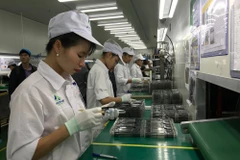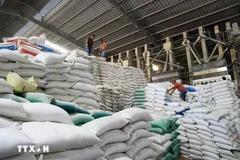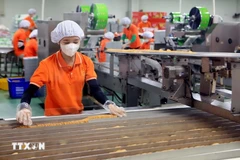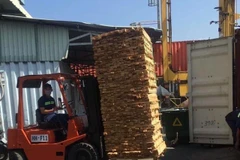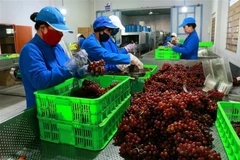Hanoi (VNA) – Vietnamese garment and textile enterprises are taking measures to seize market opportunities and maintain production and increase exports, amidst a significant decrease in orders.
According to statistics by the Vietnam National Textile and Garment Group (Vinatex), in the first half of this year, excluding Japan - the only market where Vietnam's textile and garments kept a positive growth rate of 3% - the remaining markets such as China reported a year-on-year decrease of 17%, the European Union 10%, and the Republic of Korea 7%.
Notably, the export turnover to the US market declined for the third consecutive quarter, with the second quarter witnessing the highest decline of 26% against that of the same period last year.
However, Vietnam was not the only case in point, as the majority of textile exporting countries in the world also recorded negative growth rates in the first half of 2023. For example, China's export turnover in June was down more than 14%, pulling the 6-month result to 145.2 billion USD, down 7.3% over the same period last year. Other countries that competed with Vietnam in garment and textile exports also saw their export turnover falling by 20%-25%.
Chairman of the Board of Directors, General Director of M2 Vietnam Joint Stock Company (M2 Fashion) Nguyen Hai Duong said that the decrease in orders from major markets such as the US and the EU has affected the export of the Vietnamese garment and textile industry.
 Textile and garment exhibitions are good opportunities for businesses to find partners and expand markets. (Photo: VietnamPlus)
Textile and garment exhibitions are good opportunities for businesses to find partners and expand markets. (Photo: VietnamPlus)
Enterprises also forecast that their situation of production and export will gradually improve, but difficulties will linger on until the end of 2023, because many of them have not yet had enough orders for the third and fourth quarters. Besides the fall of orders, businesses also face difficulties due to the remarkable reduction in prices, even by over 50%.
According to Duong, in order to avoid dependence on export orders, they need to promote activities to stimulate domestic consumption and expand the domestic market to boost production and business, remove difficulties, and restore economic growth.
Exploiting the domestic market with 100 million people is a foundation to help textile and garment enterprises maintain production and business, he stressed.
Meanwhile, Bui Van Tien, General Director of the Viet Tien Garment Corporation, said that as the economic situation in the country and the world remains difficult, the main tasks in the coming time are keeping markets and the numbers of labourers and customers stable, ensuring jobs, and maintaining production activities.
Vice President and General Secretary of the Vietnam Textile and Apparel Association (Vitas) Truong Van Cam also suggested businesses find solutions to retain workers and customers, organise vocational training courses, promote green and digital transformation, accept orders that are not their strength to get jobs for employees, and minimise unnecessary expenses.
According to the Ministry of Industry and Trade, garment and textile exports in July reached 3.2 billion USD, up 4.6% year-on-year, bringing the revenue in the first seven months of this year to 8.93 billion USD, down 15.1% from the same period last year./.







